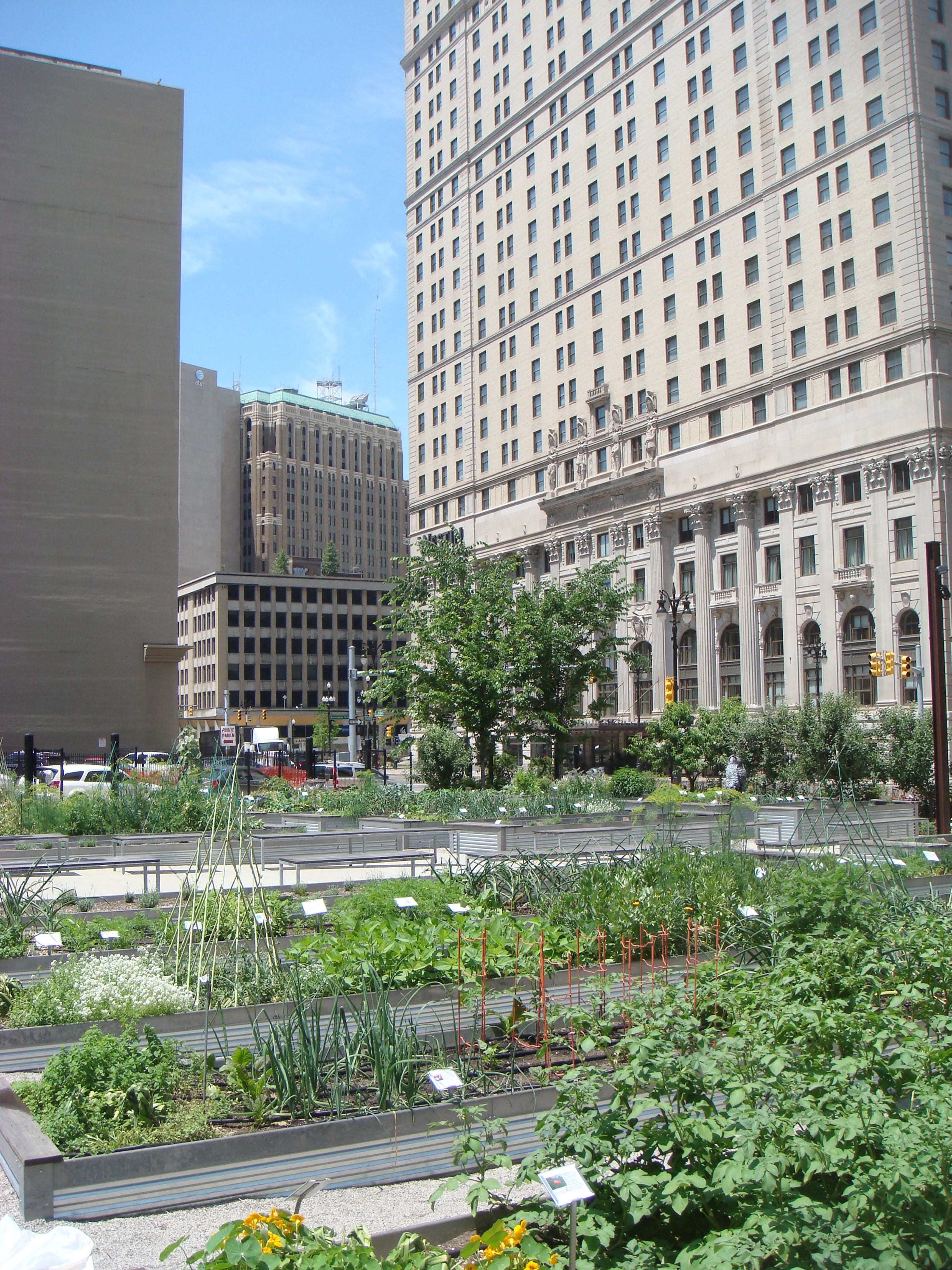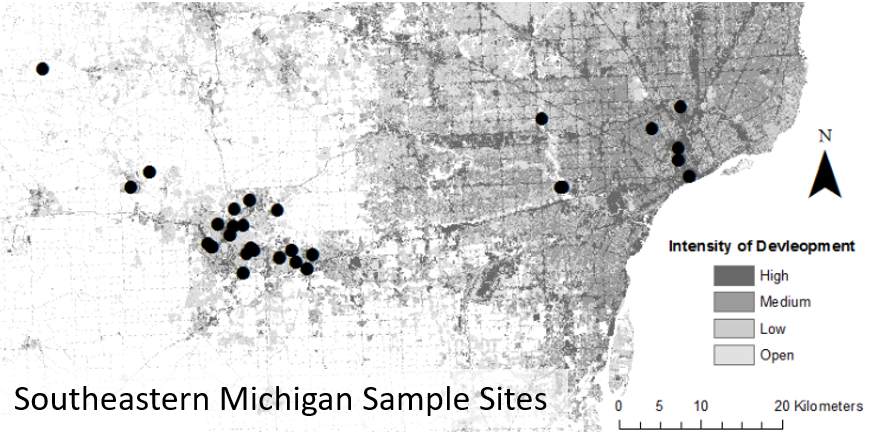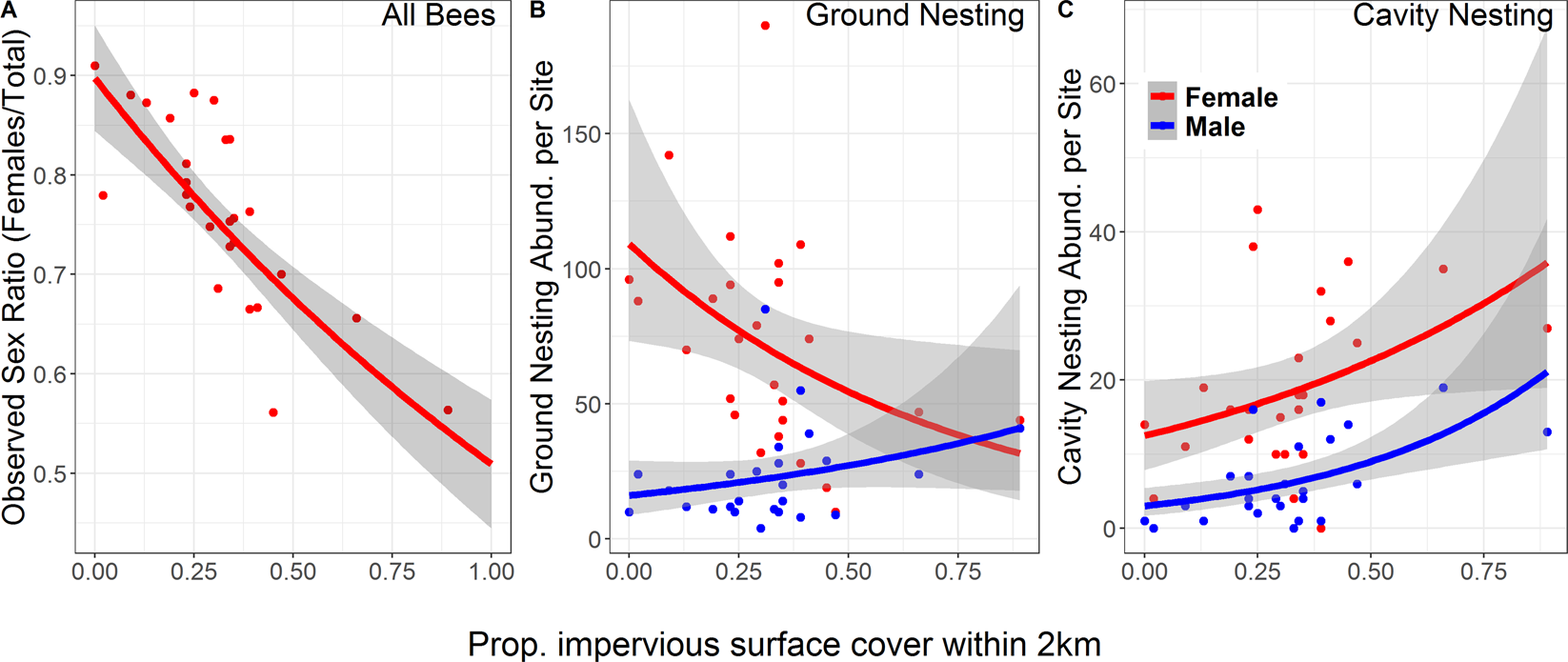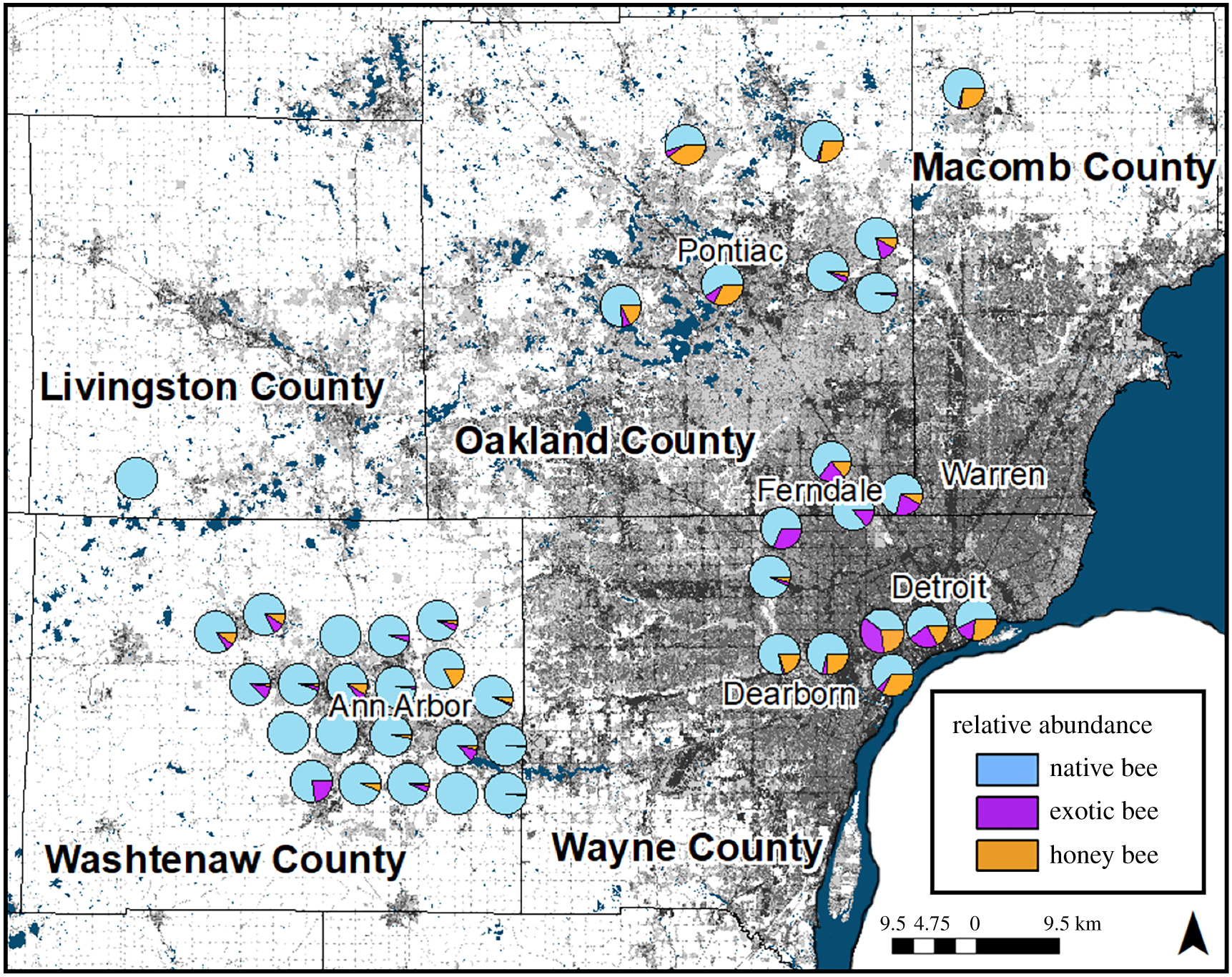Urban Ecology

The extent of human landuse has increased substantially over the last half century. This has seen the general expansion of both agriultural and urban landuse.
In particular, the extent of urban landuse development is expanding rapidly across the globe.
This expansion necessarily comes at the expense of the extripated
habitat at these locations and necessarily changes the landscape for wildlife in the area. However, urban development in particular has been noted for offering
potenial habitat and resource options for certain fauna, wild pollinating bees in particular. Given the sharp decline in wild bee species, there is interest in
determining how wild bees interface with urban development and what potential there is for conservation efforts. For pollinating bees with a need for floral resources,
urban farms and gardens (such as those found in cities like Detroit, MI see Fig 1) has been a focal point for questions regarding how bees can make use of urban spaces.
My colleaues and I set out to address these questions with a multi-year study in southeastern MI. We set out to answer the following questions:
1) Can bees persist in urban agricultural spaces?
2) What is the effect of the surrounding levels of urban development at these garden sites?
3) What does this portend for future conservation efforts of these important pollinators?


To answer these questions, my colleagues and I developed a set of sample sites consistentng of more than 40 farms, community gardens, and natural reserves. These samples sites created an urban development gradient going from natural reserves with no surrounding development, to rural areas with limited urban development, all the way to sites located in city centers with high levels of surrounding urban development. Please see Fig 2. With an overall team of 11 undergraduate researchers, we sampled for bees and floal resources using a variety of sampling techniques. To determine the degree of urban development surrounding each sample site, my colleagues used the National Land Cover Database and GIS mapping to quantify the buildup of "impervious surface" at each location. Impervious surfaces are categorized as hard, inpenetrable surfaces such as roads, buildings, parking lots, etc (Fig 2). In doing so, we created a quantitative map of urban development in southeastern MI and each sample site location (Fig 3).

Overall efforts resulted in over 5000 bees representing over 150 species. This gives us definitive evidence of the ability of urban agriculture to support
bee communities. However, our analysis found that bee community composition changed as a function of urban intensity (% impervious surface coverage).
In particular it was largely mediated by bees’ nesting behavior. Wild bees species have two major nesting strategies, with some nesting in or on the ground
while others nest in small cavities such as twigs, trees, or even small openings in buildings. We can call these ground nesting bees and cavity nesting bees.
We found that impervious surfaces (roads, buildings, etc.) presented obstacles to ground nesting bees. In particular, because female bees are tied
to their nest locations, this meant that urban development limited the presence of female ground nesting bees (Fig 4). Cavity nesting bees on the other
hand were found to be more abundant in urban environments (Fig 4). This disparity led to an overall trend to more male dominated bee communities in
urban environments (Fig 4).

As an important and related corollary, we noted that urban environments supported a higher proportion of exotic (non-native) bees than more rural and urban environments (Fig 5). Given that the majority of exotic bees were found to be cavity nesting bees, this does fit with our findings seen in Fig 4. These are important considerations in the effort to conserve at-risk native species and monitor possible invasives. My colleauges and I hope that such knowledge about how different bee species are able to interface with different types of environments will be taken into account in developing further conservation efforts to support threatened and endangered wild bees.
This research is published in Biology Letters (Royal Society),
Scientific Reports (Nature),
Royal Society Open Science, and
Michigan Journal of Sustainability.
These papers are also readily available on my Research Gate page.
This work was further publicized in popular media. Some examples include:
NPR,
PBS News Hour,
Detroit Metro Times,
Sierra Club,
The Scientist Magazine,
PLOS Blogs,
PNAS News Feature *More available upon request